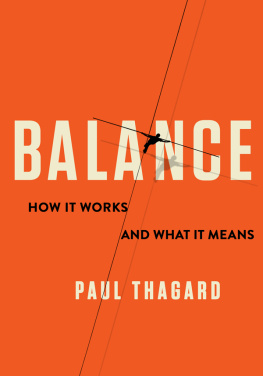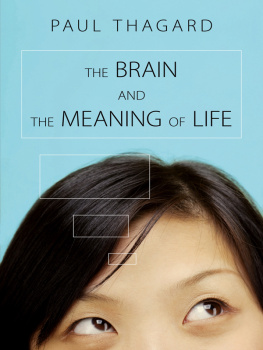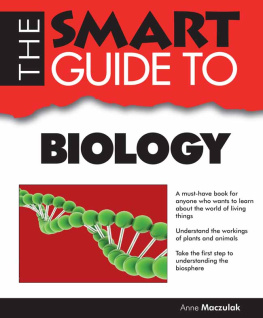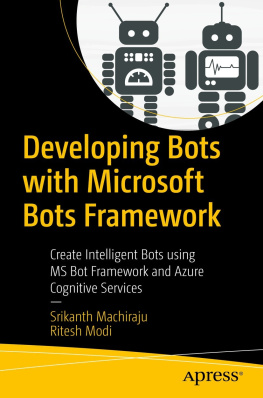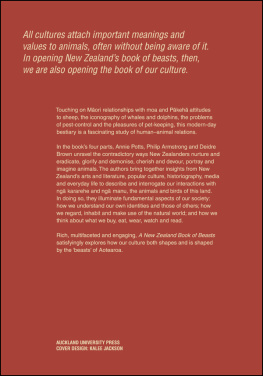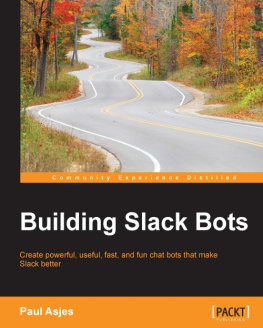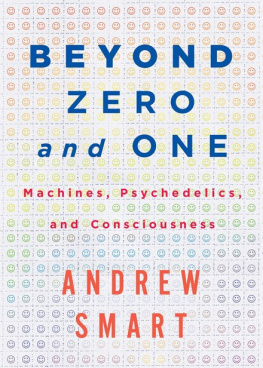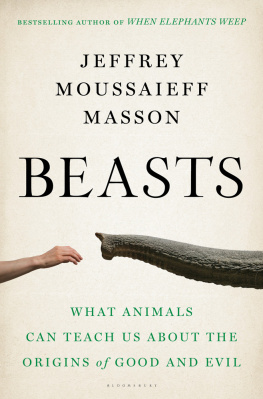Paul Thagard - Bots and beasts : what makes machines, animals, and people smart?
Here you can read online Paul Thagard - Bots and beasts : what makes machines, animals, and people smart? full text of the book (entire story) in english for free. Download pdf and epub, get meaning, cover and reviews about this ebook. year: 2021, genre: Politics. Description of the work, (preface) as well as reviews are available. Best literature library LitArk.com created for fans of good reading and offers a wide selection of genres:
Romance novel
Science fiction
Adventure
Detective
Science
History
Home and family
Prose
Art
Politics
Computer
Non-fiction
Religion
Business
Children
Humor
Choose a favorite category and find really read worthwhile books. Enjoy immersion in the world of imagination, feel the emotions of the characters or learn something new for yourself, make an fascinating discovery.

- Book:Bots and beasts : what makes machines, animals, and people smart?
- Author:
- Genre:
- Year:2021
- Rating:5 / 5
- Favourites:Add to favourites
- Your mark:
- 100
- 1
- 2
- 3
- 4
- 5
Bots and beasts : what makes machines, animals, and people smart?: summary, description and annotation
We offer to read an annotation, description, summary or preface (depends on what the author of the book "Bots and beasts : what makes machines, animals, and people smart?" wrote himself). If you haven't found the necessary information about the book — write in the comments, we will try to find it.
Bots and beasts : what makes machines, animals, and people smart? — read online for free the complete book (whole text) full work
Below is the text of the book, divided by pages. System saving the place of the last page read, allows you to conveniently read the book "Bots and beasts : what makes machines, animals, and people smart?" online for free, without having to search again every time where you left off. Put a bookmark, and you can go to the page where you finished reading at any time.
Font size:
Interval:
Bookmark:
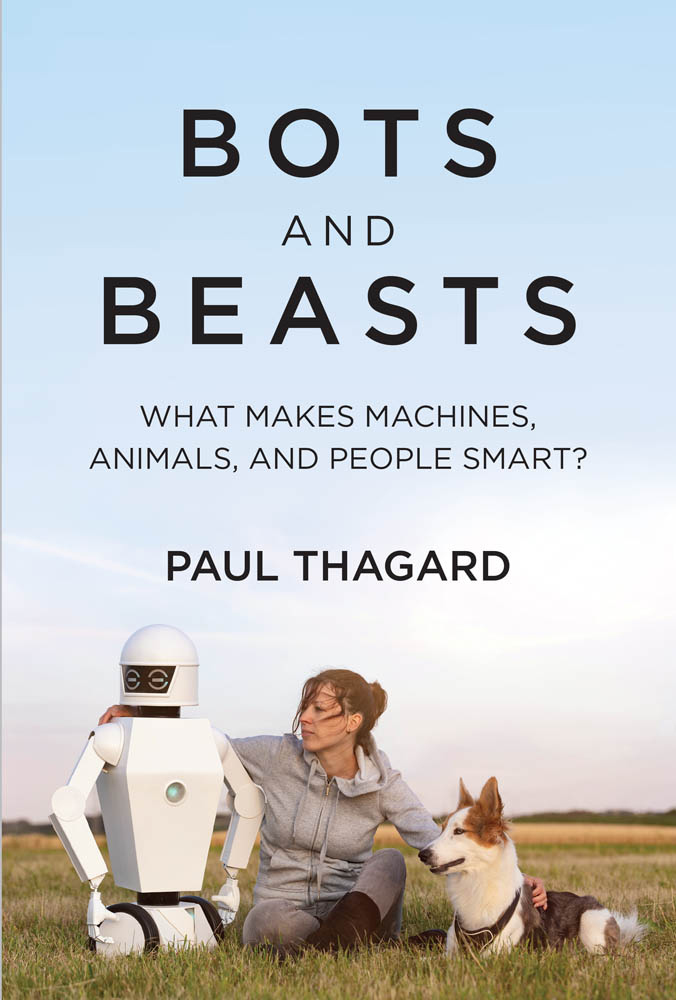
Bots and Beasts
What Makes Machines, Animals, and People Smart?
Paul Thagard
The MIT Press
Cambridge, Massachusetts
London, England
2021 The Massachusetts Institute of Technology
All rights reserved. No part of this book may be reproduced in any form by any electronic or mechanical means (including photocopying, recording, or information storage and retrieval) without permission in writing from the publisher.
Library of Congress Cataloging-in-Publication Data
Names: Thagard, Paul, author.
Title: Bots and beasts : what makes machines, animals, and people smart? / Paul Thagard.
Description: Cambridge, Massachusetts : The MIT Press, [2021] | Includes bibliographical references and index.
Identifiers: LCCN 2020040791 | ISBN 9780262045940 (hardcover)
Subjects: LCSH: Intellect. | Animal intelligence. | Computer logic. | Cognitive science.
Classification: LCC BF431 .T423 2021 | DDC 156/.3dc23
LC record available at https://lccn.loc.gov/2020040791
d_r0
For my smart sons, Dan and Adam
List of Figures
- Zhanna and Pixie. Photo by Laurette Larocque.
- Adam and Dan Thagard in Paris in 2004. Photo by Paul Thagard.
- Sign at the University of Bristol. Photo by Paul Thagard.
- Tasks like those in Ravens matrices.
- How Watson answers questions.
- Simple neural network that takes perceptual inputs and classifies an object as a kind of animal. Circles represent artificial neurons, and lines indicate connections between neurons.
- Three-layer network capable of learning by propagating errors back through the networks and changing strengths of connections.
- Waymo self-driving car.
- Source: Wikimedia Commons, licensed under the Creative Commons Attribution-ShareAlike 4.0 International license.
- How self-driving cars perceive and act.
- How Alexa does what you tell it to do.
- Use of neural networks to carry out machine translation.
- How Netflix identifies taste groups that are used to provide recommendations to individuals.
- Approximate evolutionary history of smart animals, showing divergences. The lengths of the lines are not proportional to time.
- Recursive thinking about thinking. From M. C. Corballis, The Recursive Mind: The Origins of Human Language, Thought, and Civilization (Princeton, NJ: Princeton University Press, 2011), 2. By permission of Princeton University Press.
- Origins of human advantages.
- Interaction of brain size and cognitive and social advantages.
- Diagram for attributing mind to myself. The solid lines indicate coherence resulting from explanations, and the dotted line indicates incoherence between competing hypotheses.
- Diagram for attributing mind to others. The solid lines indicate coherence resulting from explanations, and the dotted line indicates incoherence between competing hypotheses. The wavy lines indicate coherence resulting from analogy. There should also be wavy lines between the analogous pieces of evidence, for example, between You learn and I learn.
- Diagram for attributing consciousness to bacteria. The solid lines indicate coherence resulting from explanations, and the dotted lines indicate incoherence. The jagged lines indicate incoherence resulting from disanalogy.
- Diagram for attributing pain to fish. Lines have the same interpretation as in .
- Diagram for attributing grief to elephants. Lines have the same interpretation as in figure 6.2, with the wavy line indicating analogical coherence. Evidence that humans feel grief is not shown but includes self-reports and many behaviors.
- Diagram for attributing jealousy to dogs. Lines have the same interpretation as in earlier figures. The analogy to human jealousy is not shown.
- Relational similarity task in which choice 1 is correct on the left side, and choice 2 is correct on the right side.
- Phenomena about the self.
- Map of values relevant to ethical AI. Positive values are in ovals with thick lines indicating the core; negative values are in hexagons. Solid lines indicate mutual support, and dotted lines indicate incompatibility. Not all values and connections are shown.
List of Tables
- Summary of mechanisms for intelligence
- Evaluation of machines with respect to features
- Evaluation of machines with respect to mechanisms
- Brains and evolutionary history of seven species
- Evaluation of animals with respect to features
- Evaluation of animals with respect to mechanisms
- How relation matching, analogical argument, and proportional analogy are all kinds of analogical problem solving
List of Boxes
- Sample IQ question depending on concepts
- IQ question that requires rules to answer
- Analogy item used in IQ test
- Analogy item from IQ test
Magpies can recognize themselves in mirrors, and octopuses can open jars to get at food. An IBM computer won a debate with people about the costs and benefits of artificial intelligence, and cars are beginning to drive themselves. How do computers and animals measure up to the minds of people?
Human intelligence involves more than IQ, thanks to many features such as decision making, learning, and creating. These features generate report cards for evaluating smart computers and animals. The ability to learn how to learn is just one of the advantages that people have over current bots and beasts. Consciousness only began when animals such as fish developed brains large enough to combine thoughts. Artificial intelligence is advancing but still falls short of the human capacities for consciousness, emotion, and creativity. These conclusions have important implications for the moral treatment of animals and intelligent computers.
In this book, I make the first systematic comparison of intelligence across machines, humans, and other animals. I draw on philosophy for a method of attributing mental capacities to nonhumans and for an approach to ethics based on vital needs. Psychology and neuroscience furnish the mechanisms that support intelligence. The assessment of limitations in approaches to AI today provides a clear blueprint for future research to approximate human-level intelligence. I recommend policies to ensure that such developments promote the satisfaction of human needs.
Additional material and live links for the websites mentioned in this book are available at paulthagard.com .
My friend Laurette has two cats, Zhanna and Pixie, shown in . When Laurette pets Zhanna, Pixie often interferes by attacking Zhanna. By analogy to humans, it is natural to interpret Pixies behavior as jealousy, but perhaps Pixie is just attempting to assert dominance or establish territory. What mental states can we attribute to such animals? I use the term animals to mean nonhuman animals and sometimes use beasts for the same purpose.

Zhanna and Pixie. Photo by Laurette Larocque.
Ascribing mental states to machines generates puzzles similar to those that arise with animal minds: when is such attribution justified? When I announce to my Amazon Echo that I am home, Alexa sometimes responds, Well, hello. Im very happy that youre here. Is Alexa actually happy that Im home, or is the response just a canned phrase prepared by a human? Similarly, are the self-driving cars that are now making their way around various cities really driving themselves, or are they just following commands produced by human programmers? How can we tell if machines have mental states? I use the term bots to cover robots and other kinds of intelligence accomplished by computers.
Font size:
Interval:
Bookmark:
Similar books «Bots and beasts : what makes machines, animals, and people smart?»
Look at similar books to Bots and beasts : what makes machines, animals, and people smart?. We have selected literature similar in name and meaning in the hope of providing readers with more options to find new, interesting, not yet read works.
Discussion, reviews of the book Bots and beasts : what makes machines, animals, and people smart? and just readers' own opinions. Leave your comments, write what you think about the work, its meaning or the main characters. Specify what exactly you liked and what you didn't like, and why you think so.

